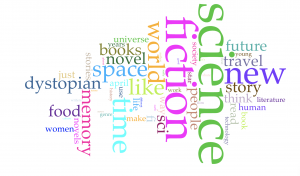*A very long blog post coming up! I’ve realized that it’s been a moment since I’ve posted on my blog–more thoughts to come in the next couple days about what I’ve been looking at in the past couple weeks.
I recently found this article by Dr. Laura Tisdall, an academic who studies primarily the history of education in 20th century Britain. Right off the bat, one of the most interesting parts to me was how interdisciplinary this article was. Dr. Tisdall includes historical research on the development of the education system in Britain, as well as research from the psychological field about child development. She then finally uses science fiction as a case study to reflect what was happening in the real world.
In this article, Dr. Tisdall examines the increase of the use of the “extraordinary child” in science fiction, which she argues specifically reflects societal changes due to new psychological research and shifts in the education system about what it means to have a “healthy childhood.” She writes: “One manifestation of this shift was the sudden emergence of depiction of ‘extraordinary children’ in British science fiction, which engaged directly with the question of how normal children should behave, and how these extraordinary children both violate and confirm these biological and psychological norms” (pg. 1). In one way, sometimes extraordinary children are painted as something amazing. They may use their power for good; they can be seen as being the hope of future generations, redemption for all the bad built up in society. But often, they are painted as having a lack of morality and sometimes being more of a threat–in the 1970s, the spotlight on the “evil child” in commercial horror and sci-fi movies also becomes more prominent. Children are painted as needing to be controlled and taught by adults to become functioning members of society.
This article caught my eye because I’m also in PSYCH 1101 at the moment, where we actually recently completed our lectures about development psychology. In this article, Dr. Tisdall discusses the popularization of Piaget’s system which set up stages in which we could view child development. We talked about this in Psych pretty extensively. However, Dr. Tisdall makes a more specific connection to how this research may have impacted the education system, which was something I hadn’t thought about extensively before. She points out that perhaps the education system took these stages too much to heart; while Piaget emphasized that these stages were flexible and were meant to reflect general trends, the education system began to present these stages as more rigid that children should be fit into.
This article made me want to check out my psychology notes again and see if there is anything else interesting that I can connect to SF in a similar way. For example, we’ve also talked about the development of a “moral code” in psychology, which is something Tisdall also touches on here; she points out that sometimes children are depicted to be lacking in morality in SF literature. I definitely want to do more research on this––I’ve kind of been inspired to shift my manifesto a little bit now. I was initially thinking I would focus more on gender in sf, but had also been doing some research about children and young adults in sf, as well the types of sf marketed towards kids and young adults (specifically YA dystopia). I’m now thinking of doing more research on children in sf in the next couple weeks.
On a final note, I’d also like to highlight the way Dr. Tisdall talked about how American sf. She includes a small paragraph where she notes that “the ‘extraordinary child’ was not merely an “American phenomenon” (as some have claimed). She points out that although it did become popularized in American sf movies, the concept argues that the concept had actually begun to appear frequently in British sf directly following World War 2. This was interesting to encounter because we’ve obviously thought about this a lot throughout the course, and it was interesting to hear another academic’s thoughts from outside the US.
Link to the PDF of the article: LAURATISDALL

